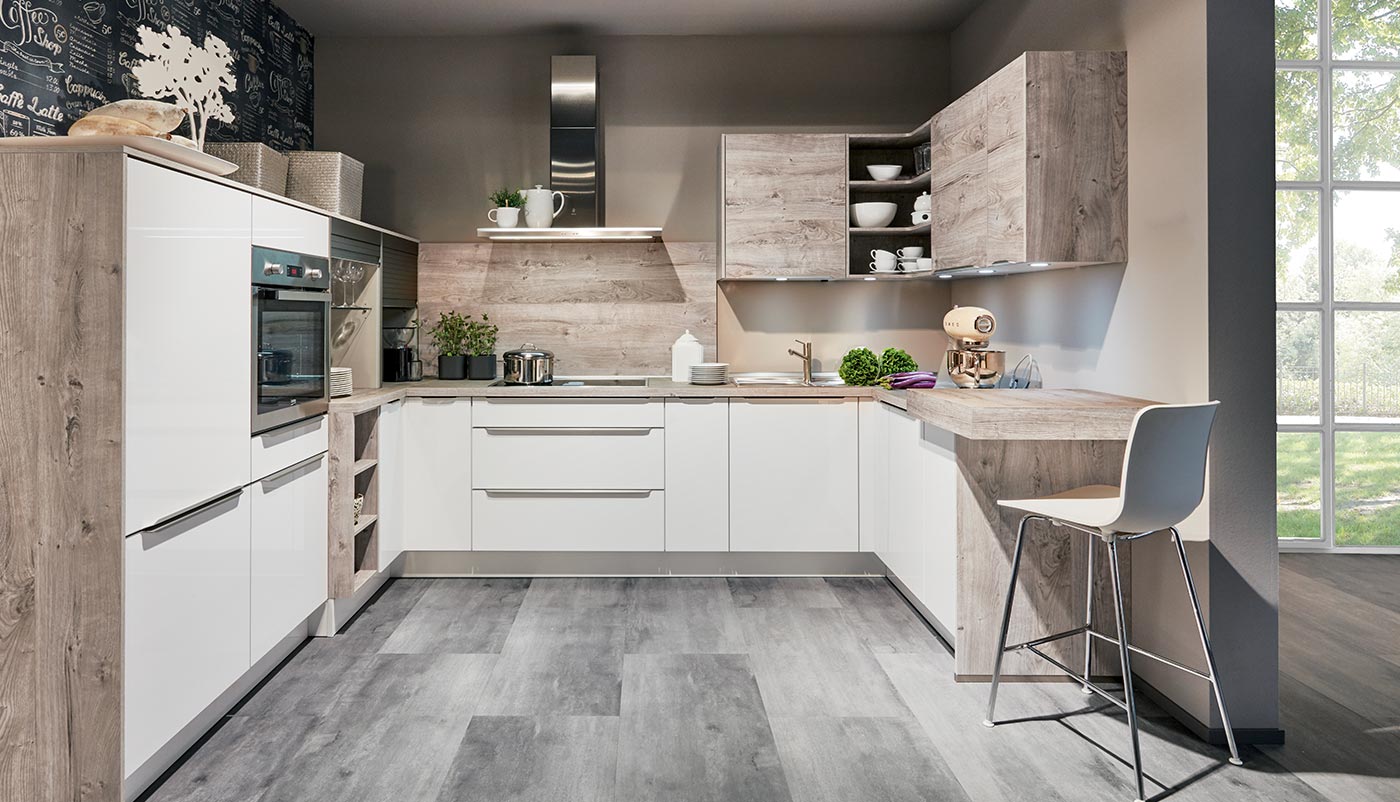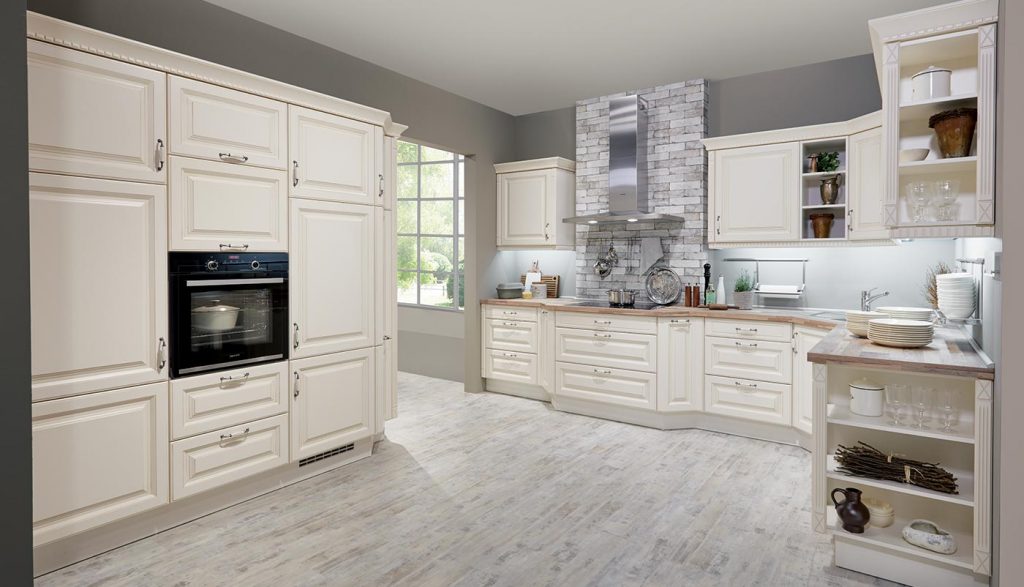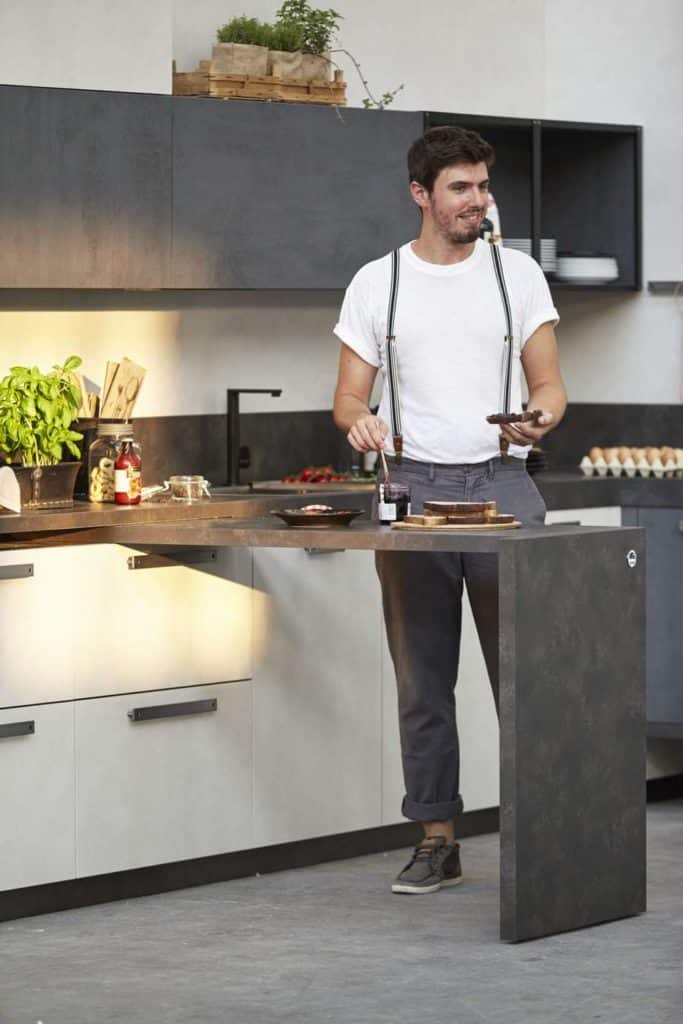
How to design a rectangular kitchen?
For a long time, the kitchen was the least well-equipped room in a house. Once the living rooms and bedrooms were arranged, the little space available was allocated to it. Nowadays, the craze for the culinary professions, largely relayed by the media, has made this room the real nerve centre of the house. So much so that we now pay particular attention to its equipment and especially to its layout. Because when you like to cook, you sometimes spend a lot of time in a few square metres. So it’s just as well that they are functional! So what do you do when you want to fit out a rectangular kitchen? Here’s a quick overview…
The rectangle, a basis for the culinary triangle
Do you know the culinary triangle? It is made up of the three types of operations that are traditionally carried out in a kitchen: preparation and cooking, washing and finally storage. In a rectangular kitchen, these operations are optimised because everything is within easy reach. This is one of its great advantages. If you spend several hours a day in this room, you immediately understand the advantage of saving a few steps each time you move! There is no need to change the shape of the kitchen, as it is ideal. At most, a bar can be added in its continuity to serve as a dining area and offer a transition to a living room.
To see the bigger picture, you need to gain height
The position of the various essential elements, such as the electrical appliances, the fridge or the storage units, obviously depends on the size and configuration of the kitchen. If space permits, the central island is perfect for adding functionality. It reduces the culinary triangle already mentioned and adds a touch of modernity. If the kitchen is smaller and you have decided to open it up to another room or put in a glass roof to give more light, you need to find the right solution to keep enough furniture and worktops. Height is an asset!
Don’t hesitate to add high furniture on walls without openings. Leave aside the idea that an oven must absolutely be at the bottom. It will do you just as much good if it is placed above drawers. Similarly, think about mobile worktops. They increase your available cooking surface without constantly monopolising space.
 Playing with colours, shapes and light
Playing with colours, shapes and light
To cook well, you need to see well. Don’t turn your kitchen into a corridor just because you want to have enough space. It is important to maintain a good balance between light and functionality. If the kitchen has a window, place the sink just below it. This will provide much needed natural light. If you are really short of light, consider installing a skylight that opens onto another room. If the structure of the house allows it, you can also opt for a skylight.
In terms of colour, aim for very light shades. White, for example, is the ideal colour to eliminate shadows. It also gives the impression that the room is larger. Play with the patterns on your furniture doors. Horizontal wood strips immediately give a feeling of fluidity. Finally, think about extending your kitchen. Opt for the bar and its high chairs which will make the junction between the kitchen and the living room.
Hunting for wasted space
 It is well known that the kitchen often suffers from being the least practical room in the house. It is not uncommon for standard furniture not to fit, because the oven is a few centimetres short of the corner unit and the dream worktop. No matter, go for the custom-made solution. This way you can make the most of every available space to store your plates, glasses and other utensils. The extra investment you make in this way will be greatly appreciated every day. If you’re a handyman, you can design your own shelves or worktop to suit your needs. But beware, not everyone is a kitchen designer! Don’t forget that what you design will have to withstand frequent use.
It is well known that the kitchen often suffers from being the least practical room in the house. It is not uncommon for standard furniture not to fit, because the oven is a few centimetres short of the corner unit and the dream worktop. No matter, go for the custom-made solution. This way you can make the most of every available space to store your plates, glasses and other utensils. The extra investment you make in this way will be greatly appreciated every day. If you’re a handyman, you can design your own shelves or worktop to suit your needs. But beware, not everyone is a kitchen designer! Don’t forget that what you design will have to withstand frequent use.